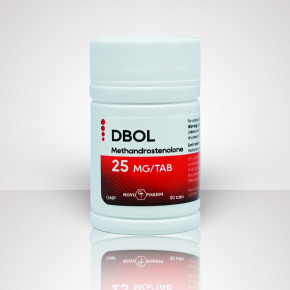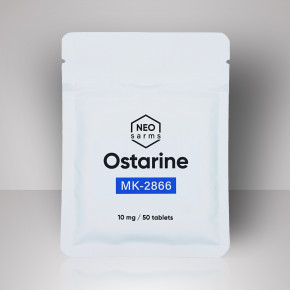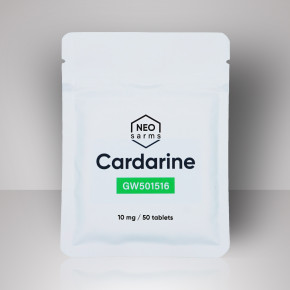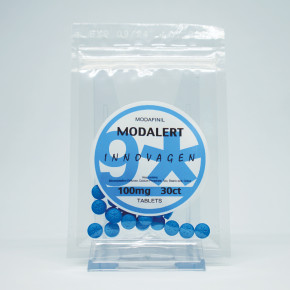Bromonordiazepam is a pharmaceutical drug belonging to the benzodiazepine family. In other words — yes, it’s yet another benzo sleeping pill.
It is derived from the popular sedative and anxiolytic medication, Diazepam. The key difference with other benzos? In short, it’s milder than other comparable options.
Known for its calming and sedative properties, Bromonordiazepam is primarily prescribed for the treatment of anxiety, insomnia, and muscle spasms.
The Benefits of Bromonordiazepam
As you would expect from a benzo, its primary effect is calming your nervous system down and knocking you out to sleep. The full list of benefits is larger, though, and typically includes:
Anxiety Relief
Bromonordiazepam is highly effective in reducing symptoms of anxiety disorders. By targeting specific receptors in the brain, it helps alleviate feelings of worry, fear, and unease.
Insomnia Treatment
People with sleep disturbances or insomnia often find Bromonordiazepam beneficial. In fact, this is the primary use for the compound. Its sedative properties promote relaxation, making it easier to fall asleep and enjoy a restful night.
Muscle Spasm Management
Bromonordiazepam has additional muscle relaxant properties, making it a valuable treatment option for individuals suffering from all sorts of tension. It helps relieve discomfort and reduces muscle contractions.
Seizure Control
In some cases, Bromonordiazepam may be prescribed to manage seizures, especially in individuals with epilepsy. By stabilizing electrical activity in the brain, it can help prevent or reduce the severity of the disease.
The Mechanism of Action
Bromonordiazepam works by enhancing the effects of a neurotransmitter called gamma-aminobutyric acid (GABA) in the brain. GABA acts as a natural tranquilizer, slowing down nerve cell activity and promoting relaxation.
We’ve got a more detailed description of the way GABA works in this guide on Lorazepam: all benzos are similar in their effects on this neurotransmitter.
Bromonordiazepam Dosage Guidelines
As usual, the recommended dosage of Bromonordiazepam may vary depending on factors such as your medical condition, age, and individual response to the medication. In general, the starting dosage of Bromonordiazepam is typically low to minimize the risk of adverse effects:
- A common initial dosage is 1 tablet per day, taken orally.
However, it's important to note that the specific dosage and frequency may be adjusted based on your individual needs and response to treatment.
Administration and Timing — When to Take Bromonordiazepam?
Bromonordiazepam typically starts to take effect within 30-60 minutes after ingestion. The peak effects are usually experienced around 3-4 hours after administration.
- The effects can last between 6-8 hours.
It's important to plan your activities accordingly, allowing sufficient time for rest and recovery if necessary.
Don’t take the drug before driving, going to any important events, and so on: it’s called a sleeping pill for a reason.
Precautions and Safety Guidelines
Avoid alcohol consumption while taking Bromonordiazepam. Alcohol can enhance the sedative effects of the medication, leading to increased drowsiness and impaired coordination. It’s also not quite good for your brain.
Never quit it cold turkey! Benzodiazepines like Bromonordiazepam should not be abruptly discontinued. A gradual schedule is crucial to minimize the risk of withdrawal symptoms.
Potential Side Effects
While Bromonordiazepam can be highly effective, it's essential to be aware of potential side effects. Common adverse effects may include:
- Drowsiness;
- Dizziness;
- Impaired coordination;
- Confusion.
Also, some other medications or medical conditions may interact with Bromonordiazepam, leading to more adverse effects. Make sure it combines well with every other medication you may take.
Gidazepam vs Phenazepam: Comparing Benzodiazepines
Gidazepam is a benzodiazepine medication primarily used for its anxiolytic properties. It’s known for its relatively fast onset of action and intermediate duration of effect. Phenazepam shares a similar mechanism of action with Gidazepam, augmenting GABA's inhibitory effects in the brain.
So, what’s the difference? There are two important aspects to consider, despite the compounds being relatively similar:
- Half-life: Gidazepam typically has a shorter duration of effect compared to Phenazepam;
- Potency: a lower dosage of Phenazepam may produce similar effects compared to a higher dosage of Gidazepam.
So Bromonordiazepam, as a Diazepam derivative, is milder and faster than, say, Lorazepam, a typical benzodiazepine derivative, or 3-hydroxyphenazepam (a Phenazepam derivative). It’s definitely not THAT simple but you can give milder options a try before switching to more potent ones.


























 Proudly Serving Canadians Since 2012
Proudly Serving Canadians Since 2012